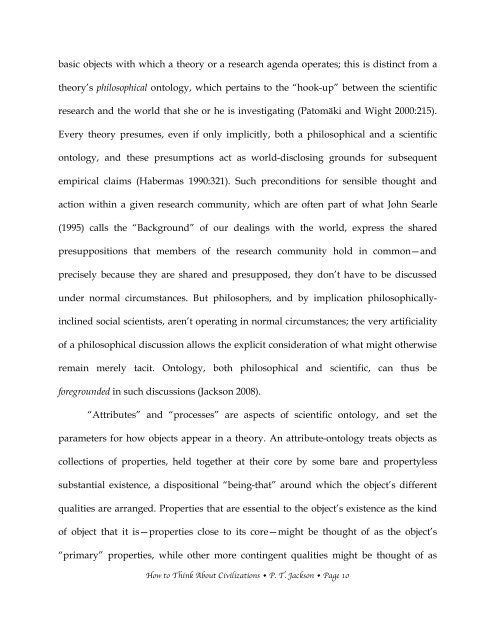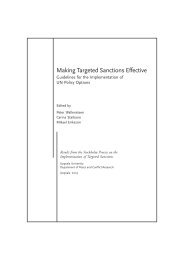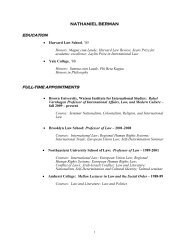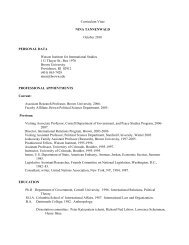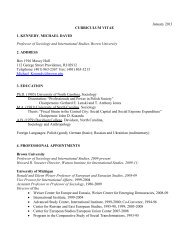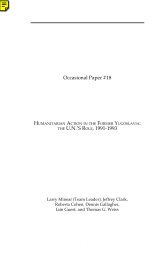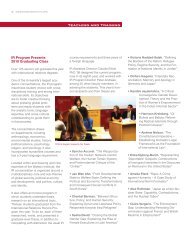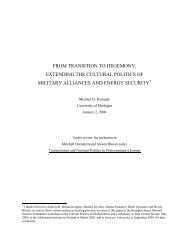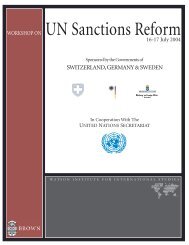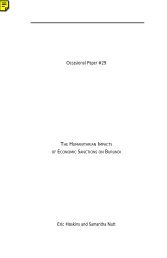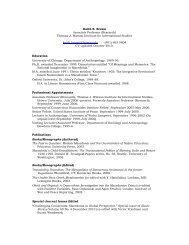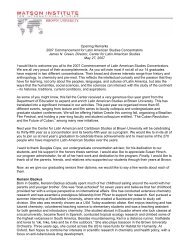How to Think About Civilizations - The Watson Institute for ...
How to Think About Civilizations - The Watson Institute for ...
How to Think About Civilizations - The Watson Institute for ...
Create successful ePaper yourself
Turn your PDF publications into a flip-book with our unique Google optimized e-Paper software.
asic objects with which a theory or a research agenda operates; this is distinct from a<br />
theory’s philosophical on<strong>to</strong>logy, which pertains <strong>to</strong> the “hook-up” between the scientific<br />
research and the world that she or he is investigating (Pa<strong>to</strong>mäki and Wight 2000:215).<br />
Every theory presumes, even if only implicitly, both a philosophical and a scientific<br />
on<strong>to</strong>logy, and these presumptions act as world-disclosing grounds <strong>for</strong> subsequent<br />
empirical claims (Habermas 1990:321). Such preconditions <strong>for</strong> sensible thought and<br />
action within a given research community, which are often part of what John Searle<br />
(1995) calls the “Background” of our dealings with the world, express the shared<br />
presuppositions that members of the research community hold in common—and<br />
precisely because they are shared and presupposed, they don’t have <strong>to</strong> be discussed<br />
under normal circumstances. But philosophers, and by implication philosophicallyinclined<br />
social scientists, aren’t operating in normal circumstances; the very artificiality<br />
of a philosophical discussion allows the explicit consideration of what might otherwise<br />
remain merely tacit. On<strong>to</strong>logy, both philosophical and scientific, can thus be<br />
<strong>for</strong>egrounded in such discussions (Jackson 2008).<br />
“Attributes” and “processes” are aspects of scientific on<strong>to</strong>logy, and set the<br />
parameters <strong>for</strong> how objects appear in a theory. An attribute-on<strong>to</strong>logy treats objects as<br />
collections of properties, held <strong>to</strong>gether at their core by some bare and propertyless<br />
substantial existence, a dispositional “being-that” around which the object’s different<br />
qualities are arranged. Properties that are essential <strong>to</strong> the object’s existence as the kind<br />
of object that it is—properties close <strong>to</strong> its core—might be thought of as the object’s<br />
“primary” properties, while other more contingent qualities might be thought of as<br />
<strong>How</strong> <strong>to</strong> <strong>Think</strong> <strong>About</strong> <strong>Civilizations</strong> • P. T. Jackson • Page 10


